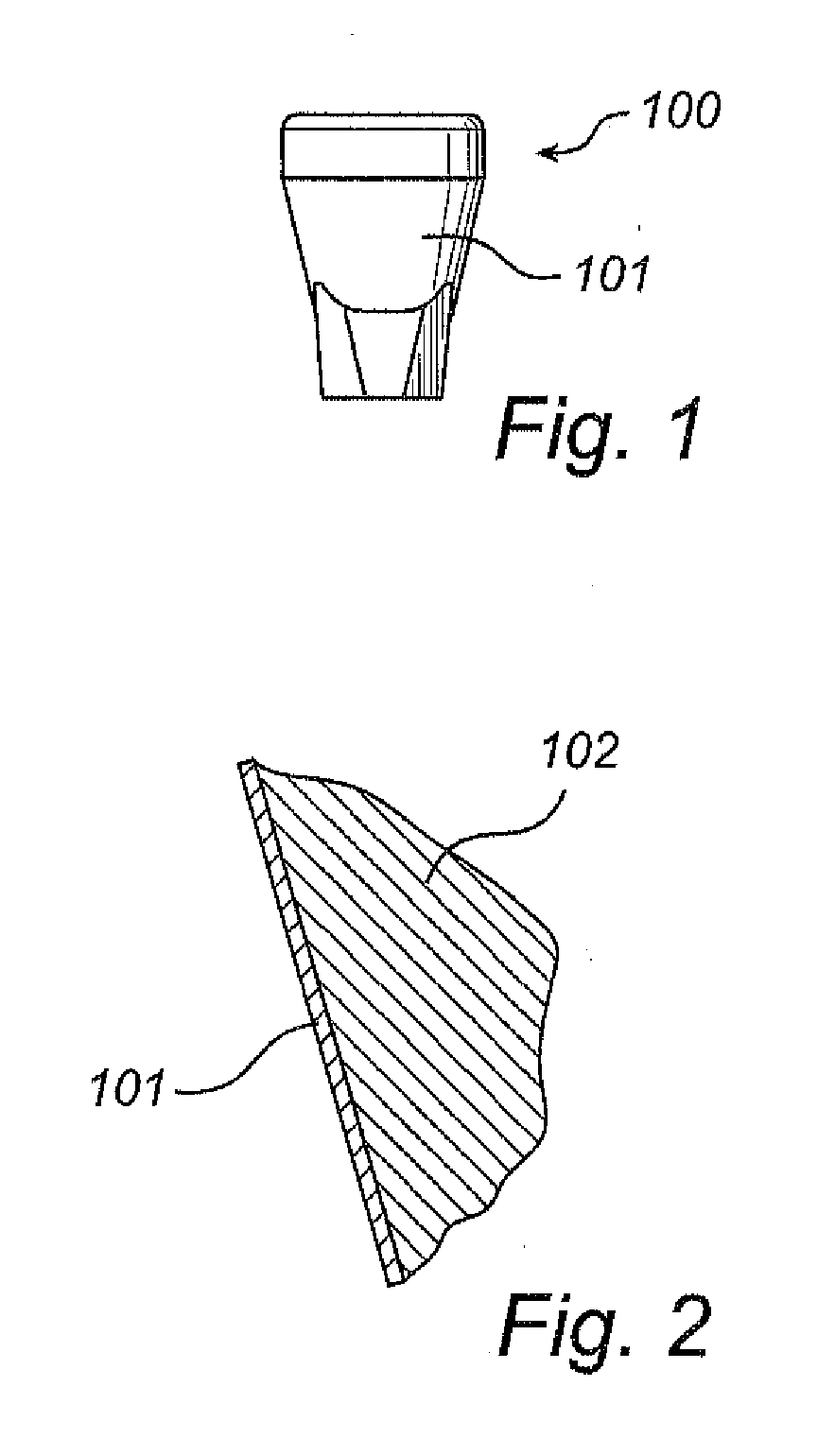Medical device having a surface comprising antimicrobial metal
a technology of antimicrobial metal and medical device, which is applied in the field of medical device, can solve the problems of bone resorption and failure of implants, biocompatibility is a crucial issue, and the risk of infection and perk implantitis,
- Summary
- Abstract
- Description
- Claims
- Application Information
AI Technical Summary
Benefits of technology
Problems solved by technology
Method used
Image
Examples
example 1a
Production of Gallium Oxide Coated Specimens
[0093]Coins of commercially pure (cp) titanium (grade 4) were manufactured and cleaned before deposition of a 40 nm thick layer of amorphous Ga2O3 using atomic layer deposition (Picosun, Finland) with precursors of GaCl3 and H2O, respectively. Specimens were thereafter packaged in plastic containers, and sterilized with electron beam irradiation.
example 1b
Surface Characterization of Gallium Oxide Coated Specimens
[0094]For all surface characterization experiments, eight specimens each of commercially pure (cp) titanium, Ga2O3 coated cp titanium produced as described above, and commercially available TIN coated cp titanium, were prepared as described in Example 1 (cleaned, coating using ALD in the case of the Ga2O3 coated specimens, packaged, and sterilized). The TiN coated specimens were included for comparison since it is known that a TiN coating provides a weakly antibacterial effect.
[0095]It was found that the surface morphology and surface roughness was unaltered by the ALD coating, but there was a slight increase of hydrophobic properties.
[0096]a) Surface Chemistry
[0097]Surface morphology and surface chemistry was analyzed with environmental scanning electron microscopy (XL30 ESEM, Philips, Netherlands) / energy dispersive spectroscopy (Genesis System, EDAX Inc., USA) at an acceleration voltage at 10-30 kV. Elements detected on the...
example 1c
Antimicrobial Effect of Gallium Oxide-Coated Surfaces
[0103]It was found that a titanium body having a surface comprising gallium (Ga) in the form gallium oxide can prevent the growth of Pseudomonas aeruginosa and Staphylococcus aureus on and around a surface and thus may be useful in preventing detrimental infection around e.g. a dental abutment implanted into the gingiva.
[0104]a) Inhibition of Bacterial Growth on Streak Plate
[0105]In a first experiment commercially pure titanium coins (φ 6.25 mm) with or without a gallium oxide coating were placed on agar plates containing homogeneously distributed colonies of Pseudomonas aeruginosa. After incubation for 24 hours at 37° C. there was a 4 mm wide visible colony free zone surrounding the gallium oxide coins, in contrast to the titanium coins that were surrounded by bacterial colonies.
[0106]b) Inhibition of Bacterial Growth Using Film Contact Method
[0107]In a second experiment, a film contact method (Yasuyuki et al, 2010) was used. Str...
PUM
| Property | Measurement | Unit |
|---|---|---|
| thickness | aaaaa | aaaaa |
| thickness | aaaaa | aaaaa |
| thickness | aaaaa | aaaaa |
Abstract
Description
Claims
Application Information
 Login to View More
Login to View More - R&D
- Intellectual Property
- Life Sciences
- Materials
- Tech Scout
- Unparalleled Data Quality
- Higher Quality Content
- 60% Fewer Hallucinations
Browse by: Latest US Patents, China's latest patents, Technical Efficacy Thesaurus, Application Domain, Technology Topic, Popular Technical Reports.
© 2025 PatSnap. All rights reserved.Legal|Privacy policy|Modern Slavery Act Transparency Statement|Sitemap|About US| Contact US: help@patsnap.com

